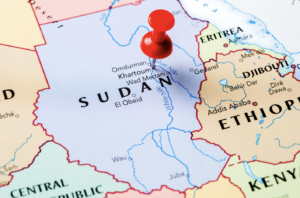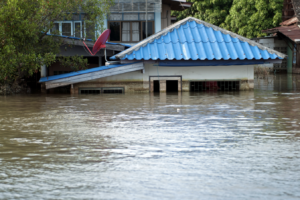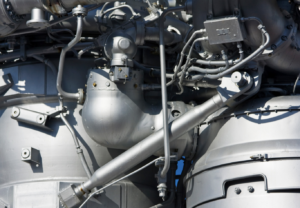Anúncios
In Boeing’s new Starliner, astronauts prepare for launch. How will the spacecraft affect US spaceflight?
The 2011 landing of the Space Shuttle Atlantis at Kennedy Space Centre ended 30 years of the human shuttle program, leaving NASA with a dilemma. The US could not launch astronauts while the shuttle was flying without adequate government funds to create a successor.
Only $80m (£64m) for a seat in a tiny Russian Soyuz spacecraft could get a crew to the International Space Station (ISS).
Many were surprised that the country that had landed men on the Moon, constructed and maintained the Hubble Space Telescope in orbit, and created a large space station was now using a 45-year-old Cold War rival’s spacecraft.
Post-Crimean War comments from Russia’s Deputy Prime Minister Dmitry Rogozin worsened relations’ decline.
In response to US technological export restrictions, he wrote: “After analysing the sanctions against our space industry I suggest the US delivers its astronauts to the ISS with a trampoline.” He also displayed a trampoline with a NASA emblem in case the message was too subtle.
NASA’s Commercial Crew Program (CCP) is finally being realized after 13 years with Boeing’s Starliner spacecraft’s maiden crewed launch. The CCP model’s viability and Boeing’s delicate reputation rest on a successful test flight.
“It’s been a long road to get here,” says Washington DC’s Center for Strategic and International Studies Aerospace Security Project fellow Makena Young. “I think it’s a reminder that although we have a good record, space is still really difficult and it’s hard to be successful.”
The CCP replaces NASA’s design, construction, and ownership of spacecraft with commercial seats. It’s like buying a seat on an airliner, but one that costs over $55m (£44m) for a roundtrip journey and requires billions of government funds to build.
Boeing’s Starliner website resembles a car brochure
NASA funded five commercial spacecraft, then chose two in 2014 (you can see the chronology and costings here): Boeing’s Starliner and SpaceX’s Crew Dragon.
End of 2019, the two space adversaries were neck and neck in the launch battle. SpaceX took over after a near-disastrous test flight of the first uncrewed Starliner in December after a series of technical issues on the Boeing plane during testing. First Crew Dragon launched NASA astronauts Doug Hurley and Bob Behnken in May 2020.
While waiting four years for a week-long voyage to the ISS in Boeing’s “next generation space capsule”, Starliner’s pioneer astronauts Barry “Butch” Wilmore and Suni Williams have been patiently waiting.
Boeing’s Starliner website reads like a car brochure, reflecting its business model. Customers may expect precise software, powerful “cruise control” and a large cabin in the reusable spaceship. The capsule may transport up to seven crew members, although NASA usually sends four to the ISS.
Boeing’s new blue spacesuits contrast with Dragon’s monochromatic designs. Suits come in several sizes to provide astronauts more comfort and flexibility.
“They’ve spent a lot of time, a lot of Nasa money as well as their own money to get this across the finish line,” he adds. “Being able to successfully and safely deliver this crew to the ISS will be a really big accomplishment and show that all that time, money and effort has been worth it.”
NASA wants to commercialize low-Earth orbit – Jason Davis
Boeing and SpaceX’s main client, NASA, benefits from two commercial suppliers flying two separate spacecraft, practically guaranteeing sovereign access to space. If one spacecraft is grounded, the other may be accessible.
“Nasa always wanted two providers, but it was very unknown at the time [CCP was conceived] whether these companies could deliver,” explains Planetary Society senior editor Jason Davis. “It’s a big deal for Nasa because this validates a strategy that they’ve put in place almost two decades ago.”
Competition should lower pricing for the agency and other prospective customers, allowing more commercial operators to fly humans.
“Nasa very much wants to establish a market for low-Earth orbit,” Davis adds. “So that crew and cargo transportation becomes independent from them.”
For the first time, companies may choose whether to purchase a spaceship seat or rent a capsule. Axiom Space, located in Texas, has chartered three Crew Dragon missions to the ISS and plans many more, including a potential all-British mission. Dragon and Starliner may transport humans to commercially managed space stations in the future.
“The ISS will be retired sometime around the end of this decade, and it will be replaced by a number of [private] space stations,” said UK Space Agency space exploration chief Libby Jackson. “These stations will still have anchor customers in the form of Nasa or the European Space Agency (Esa), but there are opportunities to develop new materials, new drugs that you could only manufacture in space – I’m really excited to see what opportunities that free market thinking will bring.”
China is shaping up as the second space powerhouse
Although space access is primarily about company competitiveness, geopolitics and national pride are still significant in human spaceflight. Soyuz capsules and Crew Dragon capsules are still used by US and Russian astronauts on the ISS despite the Ukraine crisis. If that deal expires without dramatic political changes in Moscow, the US and Russia will again be enemies.
By then, Soyuz will be beyond 60, so the US won’t care about Russia. China is becoming the world’s second space powerhouse with its space station, new spacecraft, and Moon crewed missions.
“China has really emerged as a powerful nation in space,” he argues. “We regard them as the number two behind the US in our annual strategic assessments.”
“Being able to have these resilient, robust, reliable, ways to get into low-Earth orbit for the US is incredibly important in maintaining that strategic advantage and being able to show the world that we have more than one way to get to space,” she adds.







